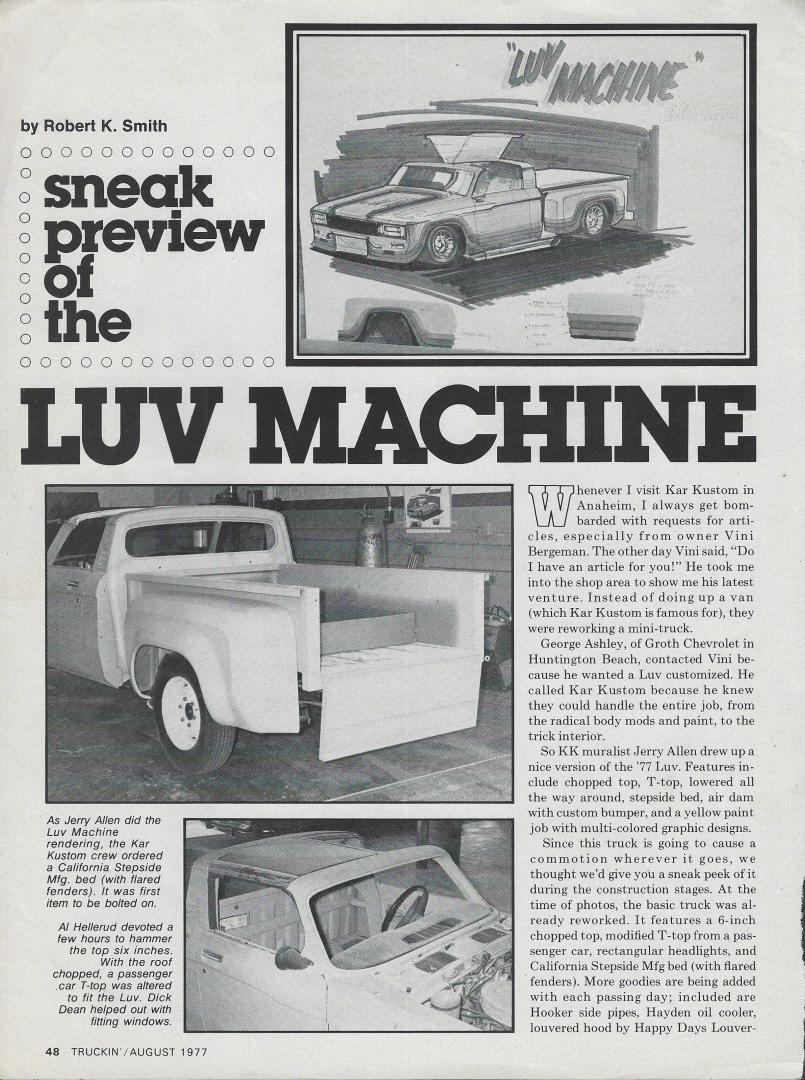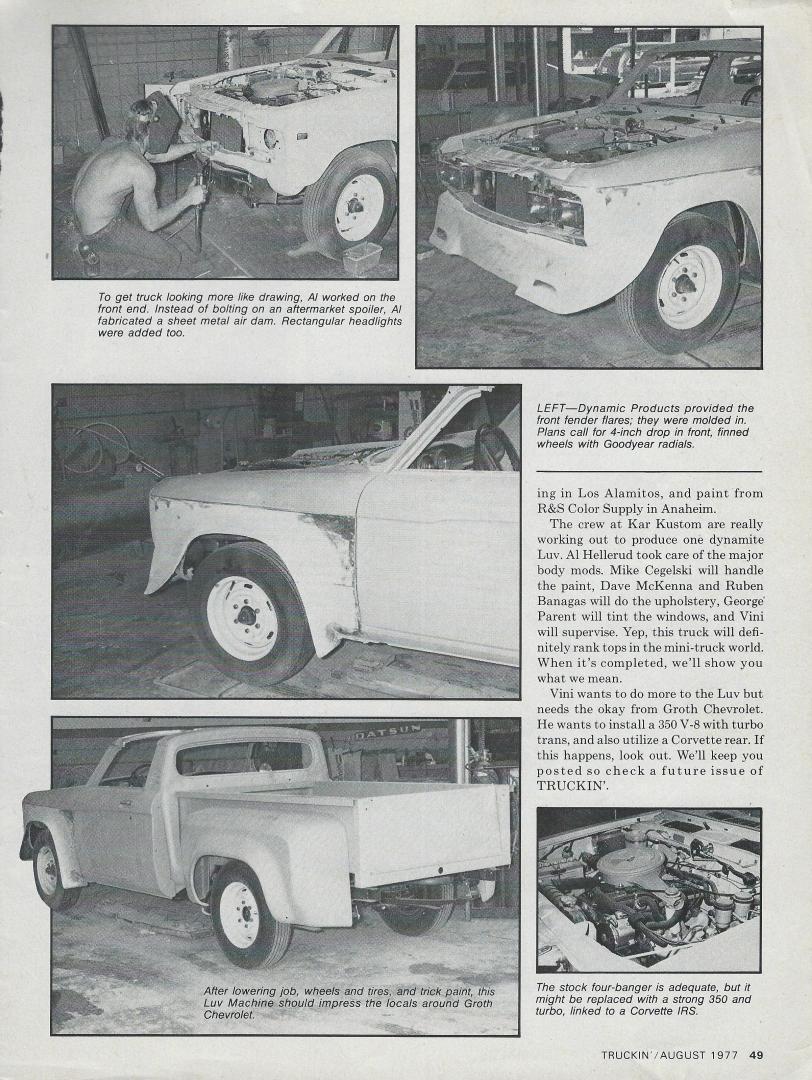
Brian Austin
Members-
Posts
1,692 -
Joined
-
Last visited
Content Type
Profiles
Forums
Events
Gallery
Everything posted by Brian Austin
-
What did you see on the road today?
Brian Austin replied to Harry P.'s topic in General Automotive Talk (Trucks and Cars)
Today running around town today I saw a Deux Chevaux, and then a bit later a Chevy Nova. I wondered what car show I might have missed after seeing the 2CV. :-) -
That must've been a wild ride. The rust weathering on the fender is an interesting detail.
-
Perhaps this reference site will help: http://www.fordification.info/
-
This article comes from the perspective of noted diner historian Larry Cultrera who in 1995 had built a model of a diner... \ " ... As I said, Michael and I met sometime during the New England Diner weekend, in fact it may have been at the stop we made to the Modern Diner in Pawtucket, RI. I showed him the photos of my Star Lite Diner model and he immediately was enthusiastic about what I had accomplished. I do recall he asked about the scale of it and told him I did not use any particular scale. We quickly found out that we lived about 7 minutes or so (by car) from each other. ... We made arrangements for me to visit with him soon after and I brought the model with me. We visited at his home for an hour or so and he was impressed with my diner model and how improvised it was with little or no materials other than balsa and bass wood and other items I used to create it. Now don’t get me wrong, I think I did pretty well for this attempt to build the model but my expertise was nowhere in the same ballpark as Michael’s modelling experience. Be that as it may, little did I know that this chance encounter may have actually led to Michael’s near future project of creating Elgin Park…. " https://dinerhotline.wordpress.com/2019/01/12/a-tribute-to-michael-paul-smith-a-true-artist-in-forced-perspective-photography/#respond The Diner Hotline Weblog is a diner enthusiast blog.
-
Vintage Auto Art
Brian Austin replied to Richard Bartrop's topic in General Automotive Talk (Trucks and Cars)
Poke around this site for various automotive artists and cartoonists: http://www.motoringart.info/motoring-artist-listings/motoring-artist-information.asp?ArtistName=Jeffries Mike Just an example. -
Vintage Auto Art
Brian Austin replied to Richard Bartrop's topic in General Automotive Talk (Trucks and Cars)
Saturday Evening Post Magazine covers -
The huge EnterTrainment Junction model railroad display in Cincinnati, OH has a very informative web site, with close-up descriptions of their varied scenes and details. Most stuff is built to 1:24 scale or so, though trains are the usual "G Scale" items. Here they have a diner occupying a large storefront: https://entertrainmentjunction.com/111-july-status-report/ https://entertrainmentjunction.com/100-august-status-report/ https://entertrainmentjunction.com/102-october-status-report/ Note that while some bits might not look quite right up close, they are often meant to be seen from several feet away, often through storefront windows. For more ET detail projects see this page: https://entertrainmentjunction.com/category/the-big-train-project/
- 1 reply
-
- entertrainment
- diner
-
(and 1 more)
Tagged with:
-
What did you see on the road today?
Brian Austin replied to Harry P.'s topic in General Automotive Talk (Trucks and Cars)
I recently saw a circa 1964 Chrysler Imperial convertible, in great shape. Its black roof was up, as it was a rather drizzly day. Also I routinely see MB G-Wagons. -
For the Jeep / RVer in all of us.
Brian Austin replied to Sam I Am's topic in General Automotive Talk (Trucks and Cars)
And yet the world would have been less interesting if they hadn't. The Chevy truck posted appears to be a Toronado-type FWD conversion, which is not uncommon. Also not uncommon are specialty truck conversions utilizing the front end of a 4x4 drivetrain along with some sort of "dead" rear axle. -
I've been fascinated with these beasts since growing up with the old Lesney toy. There is a similar one in Corgi's fairly-recent diecast collectible line in 1:50 scale. I'd like to point out the Showmans engines hauled small circuses around the UK, and then once set up, powered the various attractions: http://www.antons-show.co.uk/heritage.htm To see British steam road locomotives of various types in action, be sure to search YouTube for Dorset Steam Fair. These engines are popular with enthusiasts in the UK who build large-scale working models that actually run on steam (often fired by coal) and the larger ones can haul people around. For what it's worth, ERTL produced a diecast collectible CASE steam traction engine of the American agricultural type. Now you need to build a low-bed trailer to display the completed Showmans engine, hauled by Monogram's Kenworth truck. :-)
-
A set of 1:25 scale period engine cutaway displays would be a novel challenge. :-)
-
https://classiccars.com/listings/view/1206579/1955-chrysler-windsor-for-sale-in-parkers-prairie-minnesota-56361
- 10 replies
-
- 1956 chrysler
- 1955 chrysler
-
(and 2 more)
Tagged with:
-
This is a British-based website centering around models presented in dioramas built as museum displays. http://www.themotormuseuminminiature.co.uk/about-the-museum.php
-
https://hymanltd.com/vehicles/6043-1955-imperial-limousine/
- 1 reply
-
- 1955 chrysler
- imperial
-
(and 1 more)
Tagged with:
-
I have a 1:43 Russian-made diecast of this car.
-
One thing I've noticed in diorama buildings is that walls are often much thinner than what they'd be in scale. Exterior walls can be several layers thick, depending on construction method.



ATHSTruckMeetimg529ed_edited-1.thumb.jpg.0636cbc1d4c4172efe39209170ddf3f9.jpg)